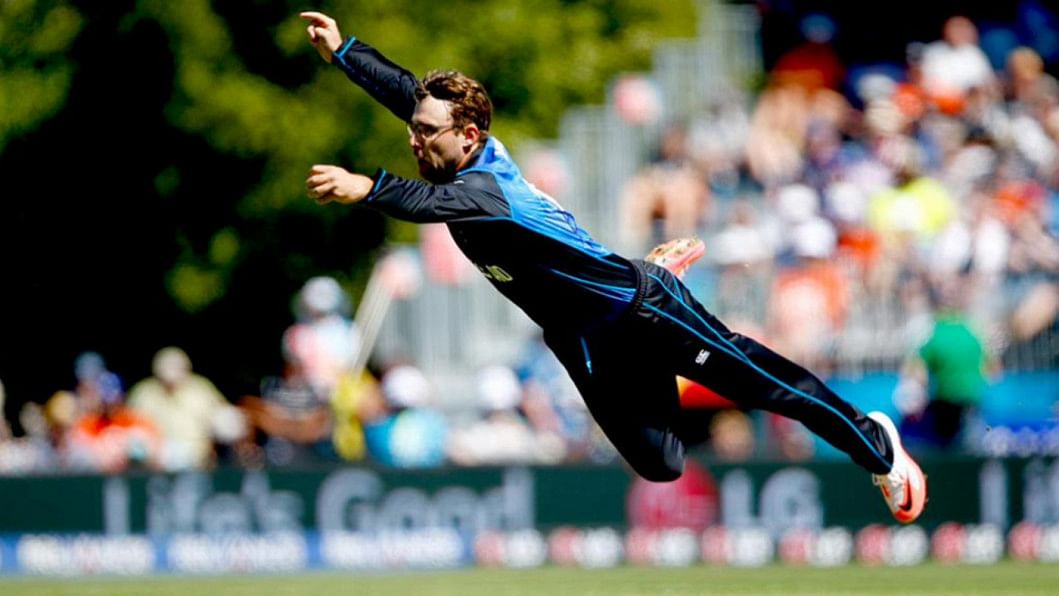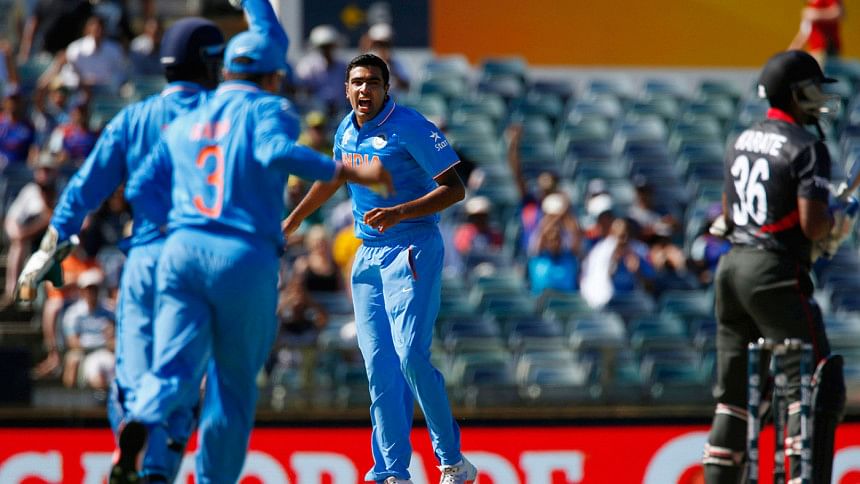Tahir, Ashwin and Vettori buck World Cup trend

In a recent interview, former offspinner Erapalli Prasanna said that a bowler like him would have been successful in the shorter forms of the game today, with the heavier bats, field restrictions and aggressive, innovative stroke-play.
The spinner must accept the inevitable prospect of being hit for a six or two, but spinning ability and variation would be the key, he said. So long as he kept the batsman guessing the length of the ball, and practised deception by varying pace and turn, a bowler of his vintage would be effective without the aid of such tricks as the doosra or the carrom ball.
The scorecards from the first few World Cups reveal that the spinners were usually more economical than the pacemen, though they did not get too many wickets. To the sceptics who claim that it was much easier bowling to the not-so-aggressive batsmen of that era, I'll point out that even in those prehistoric times, the quicks were by and large going for many more runs.
In fact, the role of the slow bowler was often seen as one of restricting the flow of runs in the middle overs.
Rarely did the spinner play a role in the death, or in the opening overs - a trend initiated in the 1992 World Cup by Martin Crowe via offspinner Dipak Patel.

In this World Cup, spinners have found life difficult, at least in terms of runs per wicket, yet Daniel Vettori, R Ashwin and Imran Tahir have played vital roles in their team's successes. From what I have seen, all three have followed a few common principles: a relatively low trajectory, controlled turn, and minimum width - all this without necessarily having to fire it in fast.
Ashwin, we have all seen, has been showing greater discipline than earlier, confining his variations largely to flight and pace, with an off-stump line and good length being constants.
Long hours in the nets during the time the Indians spent before the World Cup in Australia seem to have helped him (and the other Indian bowlers, who tended, even in the recent past, to spray the ball everywhere).
Tahir has generally been the most adventurous of the three, naturally so, being a wristspinner of impressive control. His googlies and straight ones have been very effective, and I expect him to be a wicket-taking bowler, especially on the bouncier Australian wickets.
Vettori has gone on record to state that his is a containing role in a team rich in fast-bowling options, but in the case of Ashwin the challenge is greater since he has to either defend or attack depending on the situation. Often, when he comes in after a solid opening partnership, he needs to do the latter, and that is when he is under pressure to deceive the batsmen in the air or off the wicket.
To his credit, it must be said that he is usually equal to the task, with the confidence to tackle the most aggressive batsmen in the world, including the rampaging Chris Gayle, who tends to be circumspect against Ashwin's wiles.
His attacking mindset, however, can work against Ashwin, or rather India's interests, when the need of the hour is to bowl a tight spell to slow things down. This is where his spin partner Ravindra Jadeja can chip in admirably, though he seems a confused bowler, unsure of his role in the team. In the early part of his career, he was very difficult to score off, and could be deadly on wickets offering purchase. Batsmen are now much more comfortable picking runs off him at will, because he tends to be one-dimensional. If he returns to his accurate, stump-to-stump line, yet varying his pace, he should be an effective foil to Ashwin.

Of the three leading spinners in the World Cup (with Rangana Herath's injury probably excluding him from this list), I expect Tahir to snare the most wickets. But Ashwin won't be far behind, especially if he bowls in the Powerplays with the batsmen intent on attack. Vettori's task would be the easiest if his fast-bowling colleagues continue their awesome form.
Bowling in New Zealand should pose a different challenge from that of bowling on Australian wickets, because, on the evidence so far in the World Cup, there is even less help for the spinner there, and Vettori's crucial wickets have been reward for his accuracy and persistence rather than turn and bite.
The spinners will have served their teams well if they keep the run flow down and break threatening partnerships.
They also have to have the guts and skill to open the bowling or dare to plunge into the slog overs. However, never having faced the rigours of today's batsman-friendly rules in my playing days as a spinner, I must confess that armchair bowling is a lot easier than the real stuff.

 For all latest news, follow The Daily Star's Google News channel.
For all latest news, follow The Daily Star's Google News channel. 



Comments